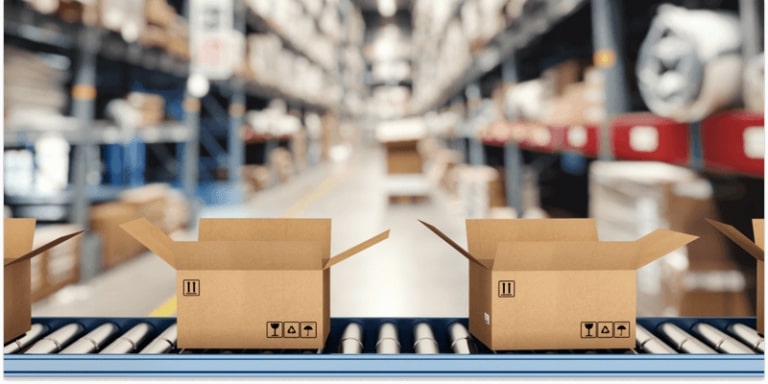What is inventory?
The physical goods and materials that a company owns are known as stock or inventory. A business owns inventory with the intention of future resale.
We can divide the inventory into:
- Raw materials – the input materials or components used to manufacture products
- Work in progress (WIP) – the materials and components that are being used to create a product
- Finished goods – manufactured goods ready to be sold to the customer
- Goods for resale – Returned items that are fit for resale
Inventory turnover represents the main source of revenue for a retailer. This is why inventory is considered to be a key business asset for any retail store.
What are the most common methods of inventory?
Depending on the product, market, and niche, you can choose from the following methods:
- Make – Best suited to those who can make a product themselves. It’s a low-risk option considering you have full control over the quality of your items.
- Manufacture – Requires the most financial investment and also presents the most risk. It’s best for those with the idea of creating a product that needs a manufacturer.
- Wholesale – A less risky option than manufacturing, wholesale involves buying ready-to-sell goods at a reasonable price and selling them to customers for a profit. It’s common for wholesale product lots to net 50-60% margins.
- Dropship – The cheapest way of all. Dropshipping removes the need to deal with inventory management or shipping yourself. You partner with manufacturers and suppliers to fulfill the orders for you.
What Is eCommerce inventory management?
eCommerce inventory management is the process of calculating the price, location, amount, and quantity of products available for your business. The products could be present in your warehouse, sourced via a third-party fulfillment center, or bought through dropshipping. With the help of eCommerce inventory management, a business knows which products are in stock, out of stock, or understocked.
Inventory is closely associated with a business’s finances. Correct control over your inventory gives you a 360-degree view of the revenue potential of each product. This helps you make better marketing decisions and adjust the demand for warehousing.

Benefits of eCommerce inventory management
Inefficient inventory management can result in significant losses for your store. If you’re selling goods far above your production rate, your customers are likely to experience delivery delays. Aligning inventory management with your existing production capability can help you deliver a consistent customer experience. Not to mention, you’ll gain better insight into where your items are in their lifecycle.
Why focus on inventory management
Efficient business practices
Imagine how much time it took workers to determine orders, storage, location of a product, and packaging before the digital industry evolved. It used to be a labor of hours to search through the inventory and get an order right. Now, this process happens in a few minutes and leads to efficiency in business practices. With a good inventory management strategy, you save time and get more productivity out of your team.
Have a bird’s eye view of all inventory
Having a single warehouse with limited products is easy to overlook, but think of businesses expanding their storage. Larger businesses with exponential growth need a solid plan to manage existing stocks and add new products to the catalog. The process becomes even more complex when multiple warehouses are added to the mix.
eCommerce inventory management helps by giving you a bird’ eye view of all stocks and information about products out of stock at any given location. With such a system, you can manage multiple warehouses even if you are not present at their location.
Meet and exceed customer expectations
If the eCommerce website shows an item in stock but is not available in the inventory, the customer will be unhappy. It is a malfunctioning system that does not meet customer expectations. With an accurate inventory management system, you will have an idea about product availability so you can keep customers in the loop.
Minimize wasted inventory
Where not enough inventory can be a problem, having deadstock can also disrupt an eCommerce business. With inventory management reporting, you can better understand customer buying patterns and set more realistic expectations.
Inventory management lets you know about a product’s shelf life so you can finish selling it before it goes to waste. You also gain an idea about when you will run out of a product. For damaged goods or goods nearing their shelf life, you can create a sale section and put a discount as well. Inventory management, along with the right eCommerce framework, can make all the difference.
Create loyal customers
eCommerce customers often want to return to a website and order a product again. Efficient inventory management systems combined with invoicing and log-in capabilities help customers look through their order history and click on the ‘order again’ button rather than finding the product again. You can handle these reorders efficiently and create a loyal customer base by delivering experiences.